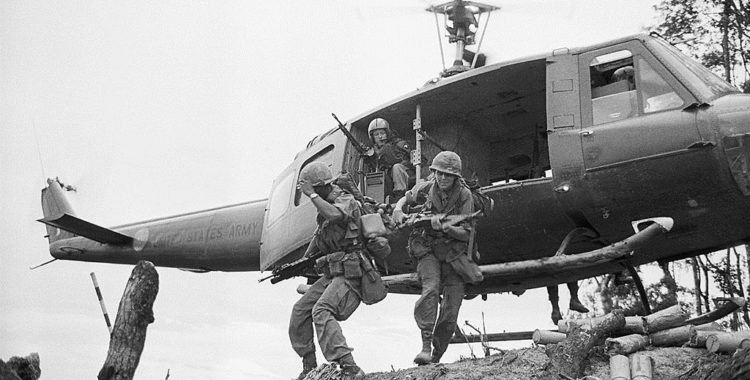HAVE YOU SUFFERED BACK / NECK / SPINAL INJURIES?
Did you receive a low rating decision on your Back, Neck, or Spinal Injury claim?
Was your Back, Neck, or Spinal Injury claim denied?
If you answered yes to any of these questions, then you can file an appeal but time is short!
We Fight for Those - Who Fought for Us
$186,706.29* AWARDED
Army Veteran with Service Connected Injuries
Vietnam Era Army Veteran awarded in 2017, effective 2011, for conditions of coronary artery disease with implantable cardioverter, cataracts, peripheral neuropathy (multiple extremities), & kidney disease, totaling 100% plus special monthly compensation due to housebound criteria. Multiple appeals were filed, but never needed to attend a hearing.
CALL US TODAY: 1.866.779.9990
$134,000.00* AWARDED
Army Veteran with Back Injuries
This veteran came to our office with a total service connection at only 10%. Based on only appeals, this Army combat Veteran, who served honorably during the Gulf War Era (OIF/OEF) in Iraq and Afghanistan, was granted 100% effective 2011 for PTSD, low back, and left knee in 2015
CALL US TODAY: 1.866.779.9990
*Amounts stated are before deductions for attorney’s fees and payment of costs.
The Time to Appeal Your Claim is Limited - Act Now!
What's the Rush?
The Veterans Administration (VA) gives you Limited Time (time frames vary by case) to appeal their decision, so it is important to act fast and secure the help of an attorney or veterans representative. The Legal Team at Injured Veterans provides quality legal help for veterans and their families in all federal veteran benefits matters. Our practice involves representing veterans and their dependents in appeals of denial of benefits from the Department of Veterans Affairs.
IMPORTANT: If you suffer from a condition that is secondary to a service connected condition, you are entitled to additional compensation. It is not uncommon for symptoms of a service connected injury or illness to appear years, if not decades, after a veteran’s service has ended.

Are You Ready for Our Legal Team to Take Action?
Contact Injured Veterans toll-free at 1.866.779.9990
CLICK HERE TO CALL NOWYour Free Case Evaluation:
Additional Information:
Back, neck, or spinal cord injuries, as well as degenerative diseases of the spine, such as Spinal Arthritis, are common service connected disability claims made by veterans.
Unfortunately, many veterans receive low ratings for these grievous injuries due to the rating criteria being based upon World War I medical knowledge.
Recently, the VA has made some adjustments to ratings for degenerative joint diseases of the back and neck. The term “ankylosis” is still the foundational classification, as it describes the mobility of an impaired joint.
The VA uses this classification for most disabilities affecting joints, which will result in ratings no higher than 30%.
The spinal cord is the main pathway for transmitting information between the brain and the nerves that lead to muscles, skin, internal organs and glands.
Injury to the spinal cord disrupts movement, sensation and function. Back, neck, and spinal injuries can also have secondary conditions related to other parts of the body. Some of the primary and secondary conditions can be found at the bottom of this page.


Back, Neck, and Spinal Injuries
Some of the primary and secondary conditions are:
Back Pain (lower/upper) – the types of pain can be Acute, Chronic, and Neuropathic.
Cervical Strain – is quite literally a “pain in the neck”, which can be caused from falls or the result of other trauma.
Nerve Paralysis (median or sciatic nerve) – trauma is often the cause of nerve damage. Median nerve damage affects one’s ability to grasp object between the thumb and forefinger, while the Sciatic nerve runs from the back of the pelvis to the back of the thigh, affecting mobility and range of motion.
Paraplegia – is the result of an injury to the lower part of the spinal cord, causing paralysis to the lower part of the body, including the bowel and bladder.
Spinal Arthritis – also known as osteoarthritis of the spine, which is a breakdown of the cartilage joints & discs in the neck and lower back.
Tetraplegia (sometimes called quadriplegia) is the result of an injury to the spinal cord in the neck area, causing paralysis to the lower body, upper body, and arms.
If your claim was denied outright or if you received a low rating that you do not agree with, regardless if it was a Secondary Condition, then Injured Veterans is here to help you. We represent veterans nationwide and our law firm, Gordon & Partners, P.A., has a comprehensive legal team standing by to take your call.
Contact Injured Veterans toll-free at 1.866.779.9990
CLICK HERE TO CALL NOW
